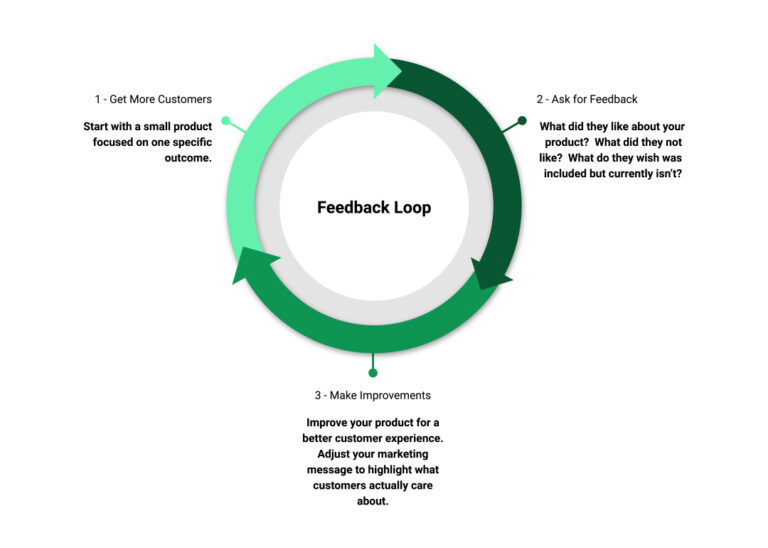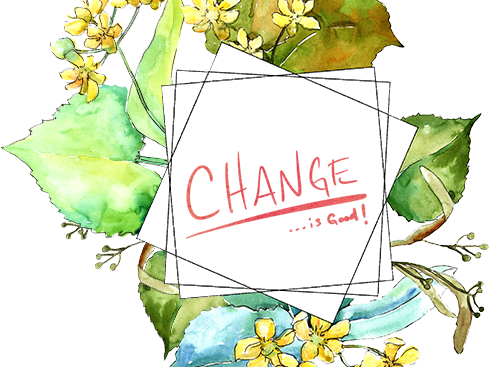Neither is a bad choice.
It all depends on your existing personal characteristics and the ones you choose to keep.
Making the wrong choice for you, can lead to burnout, depression, and possibly even years of wasted effort you will never get back.
Could you make it work as an entrepreneur if you don’t have the characteristics for it? Maybe, it’s possible. However, if you force it, it’s likely you won’t be as happy as you could be if you were to find something that is better suited to your existing characteristics.
I was watching an old episode of Grey’s Anatomy the other day.
One where there’s a patient that’s in such bad shape his wife has to decide whether or not to remove life support.
The specifics of what happened to the patient aren’t relevant in this case, but the three questions Cristina Yang (one of the surgeons on the show), asks both to the patient and continues to repeat throughout the episode as a “narration”, were quite powerful.
Do you know who you are?
Do you know what’s happened to you?
Do you want to continue living this way?
Short and simple questions, but very powerful, and applicable to many other areas of your life.
There’s no shortage of entrepreneurs who start a business because they think that’s just what you do if you want to take control of your life, increase your cash flow, and attain freedom, etc.
Only to find themselves stuck in a daily routine they have to sloggggg their way through because they just don’t enjoy what they’re doing. They’ve essentially become prisoners in a prison of their own making.
They would benefit from asking themselves those three questions. Do they know who they are? Do they know what’s happened to them? Do they want to continue living doing what they are doing, for the rest of their life?
For many people, the life of an employee can actually be a lot more enjoyable. Stable paycheck, less stress (relatively speaking), less responsibility, less decisions to make, etc.
Plus, for some employees, once they are off the clock, they are free of the responsibility of ‘making the business work’ and can just enjoy their time off.
Before going down the road of entrepreneurship it’s important that you know whether or not you’re cut out for it. Find out WHO you are.
Here’s a short list of characteristics that would make a person more suited to becoming a successful entrepreneur than an employee.
(I plan to dive deeper into each one in later blog posts)
Responsible vs “The Boss”
Let’s say you’re in business and you hired someone to run ads for you.
You give them instructions on what you’re looking to accomplish and you send them off to start working.
Within a few hours you hear a ding from your phone. It’s an email from your credit card company saying you’re being billed $500 for advertising, and do you recognize the charge?
You had explicitly told the person you hired to set a budget of only $50 per day and now you’re getting charged $500 on the first day?!
A – As “the boss”, is your initial reaction to get mad at the person you hired and blame them for you getting charged $500 on the very first day of running the marketing campaign?
Or
B – Do you believe that the outcomes in your business are 100% your responsibility? Do you see this as a learning opportunity (perhaps you’ll hire a different person or you might include a clause in your hiring contract to cover these types of mistakes)?
Remember, there’s no “right” answer. Just go with your initial instinct. Jot it down, we’ll go over the results at the end of this post.
Generalist vs Specialist
Let’s say the company you work for puts you and several other employees into a group to tackle a specific project.
They’ve chosen YOU to be a part of the team because you have specialized knowledge & expertise on a particular subject and will be an asset to the team.
One day, a few of the team members decide they no longer want to work on that project and quit the job entirely.
You are asked to learn some new things outside of your specific area of knowledge & expertise in order to “pick up the slack” and help the team out while the company finds replacements for the team members that quit.
A – Is your initial reaction to say, “no, I’m not going to do that because it’s not my job and especially because it’s not my area of expertise”…
Or will you say…
B – “Sure, I don’t know much about it, it will be a challenge, but I’m willing to learn it and do it.” (No, I’m not saying that you should do work for which you’re not being compensated, but when push comes to shove, are you a person who is comfortable stepping out of your normal comfort-zone and trying things that you may not be familiar with?)
Jot down your answer, and remember to go with your initial instinct and reaction, not what you think should be the right answer.
Execution vs Ideas
Are you the type of person who sees ideas everywhere?
Do you get excited over the idea of that opportunity and how awesome it would be?
Just as quickly as that idea came, do you get other ideas?
Do you keep a notebook of your many ideas somewhere?
And lastly…
A – Would you rather hand the idea to someone else to implement?
Or…
B – Are you equally comfortable with the execution of those ideas?
Jot your answer down.
Process Focused vs Spontaneous
In your daily life, do you…
A – Tend to be more spontaneous, doing things on a whim when you feel like it?
Or…
B – Do you tend to be more methodical, make specific plans, determine the steps needed to execute, and focus on the process of implementing those steps correctly?
Jot down your answer. Again, answer with how you currently live, not how you want to or think you should live.
Risk-Reward Evaluation vs Risk Avoidance
Business is full of risk.
Will people want the product I create?
What if I get little to no sales for the effort I put into creating the product?
What if people buy it, someone gets hurt, loses money, or gets damaged in some way and decides to sue?
What if I invest a lot of money on ads and don’t make my money back?
What if someone downloads my product and shares it with their friends?
What if I fail and all my family & friends see me fail?
A – Is your immediate reaction to play it safe, maybe even procrastinate on getting started, in order to avoid the risk?
Or…
B – Do you understand there’s risk and you’re willing to evaluate the risk-reward ratio and go for it anyway (if it makes sense for you to do)?
Engineer vs Robot
I want to re-state that there is no “right” answer here.
While the word “robot” may have a negative connotation for some people, my intention with using the word “robot” is to illustrate a specific point below.
Would you rather…
A – Have someone tell you what you need to be doing, how you need to be doing it, and perhaps even train you on how to do it well?
This way you don’t have to think about many things, all you have to do is follow the instructions. You don’t have to think about how to improve things, you don’t have to do anything “extra”, you might not even have to make any decisions, you simply execute and literally nothing else (like a robot). Which means, once you’re off the clock, you’re off and you don’t have to think about work because you know that when you go back to work the next day you’ll have another set of instructions waiting for you.
Or…
B – Are you the type of person that enjoys thinking about ways to improve a process, making it faster, more effective, perhaps even easier to do but with better results? Do you enjoy coming up with new out-of-the-box ideas to solve problems at work? Do you sometimes get in trouble (or at least irritate your boss) for not doing a task “the way you were told” even though the way you did it got better results in half the time?
By now, you probably already guessed what is going on.
Count the # of A’s you got and the # of B’s.
The more A’s you have, the more your current mindset would thrive in an employee setting.
You thrive under someone else’s leadership. You prefer someone else to take the risk of making sure the “lights stay on” at the business. You would rather someone else put in the effort of making the harder decisions so that all you have to do is implement what they tell you. In exchange you get a consistent paycheck that gives you more security & stability. Also, you enjoy not having to think about work when you’re off.
With the right job, you can make the amount of money you want, and enjoy your time off without a care in the world. Might not be a popular opinion, but for some, that’s a vision of freedom and it works for them. Nothing wrong with that!
The more B’s you have, the more you’ll succeed as an entrepreneur.
1 – Successful entrepreneurs are 100% responsible for the outcomes in their business. If something happens, it’s not someone else’s fault, it’s yours. The buck stops with you. If you’re not making the money you want to be making, that’s on you. If you’re not getting the number of customers you want, that’s on you. Once you’re able to accept that, it puts power back into your hands and empowers you to find a solution to achieve whatever you want.
2 – Initially, as a one-person show, you will have to be a “generalist” in order to execute everything you need to do — especially if you are bootstrapping. (planning the business? creating the products? creating marketing campaigns? doing the tech work? setting up your websites? launching your ads? setting up your email autoresponders? It will all be you, especially at the beginning). As you increase your cash-flow and are able to delegate some of those tasks you can begin to focus on a specific area but in the meantime you’ll need to be willing to take on the challenge of learning things you may not yet be good at.
3 – While coming up with ideas is awesome, you’ll also need to be willing to execute on those ideas. Ideas are only as valuable as the execution that turns that idea from a “good idea” to “reality”.
4 – Being more spontaneous does not mean you won’t succeed as an entrepreneur, but it does mean that it may take you a lot longer because spontaneity can lead to distraction. Successful entrepreneurs tend to be process oriented. They look at what needs to be done and create a consistent & predictable process they can follow to accomplish each and everyone of their goals.
5 – Entrepreneurs understand that in order to get what they want they will need to take risks. However, they also understand they have to evaluate those risks in terms of probable (rather than possible) rewards. That means they look at each risk from a practical perspective and evaluate the situation to see if the reward is worth the risk. If it is, they do it, if it’s not they don’t.
6 – The most successful entrepreneurs I know tend to look at their businesses from an “engineering” perspective. How can I “engineer” the specific outcome I want? What and how do I need to tweak this or adjust that system or process in order to get a better, faster, and more effective result with less effort and resources (they’re not worried about breaking it)? You are always asking questions about how to improve things and generally will have a hard time not thinking about “work” when you are not working.
So, are you more comfortable as an entrepreneur or as an employee?
Try to answer the above questions with your initial thoughts & instinct rather than what you aspire to be someday.
Your personal characteristics, as you are today, say a lot about what you would be more comfortable doing.
How do I know? Because those personal characteristics shaped your existing results and where you are today.
If you don’t currently have entrepreneurial characteristics, can you develop them? Absolutely. I’ll be talking more about that in later blog posts.
However, just keep in mind, if you don’t currently have entrepreneurial characteristics, you may not be as comfortable doing the things an entrepreneur has to do in order to succeed. You may find it intriguing now but you may end up not enjoying it in the long-term.
If the entrepreneurial route is a path you’d like to take but you need a roadmap, I can help.
Join my weekly email newsletter here.
And if you have questions or would like to discuss anything, just reach out or leave a comment below.
-Eddys Velasquez












